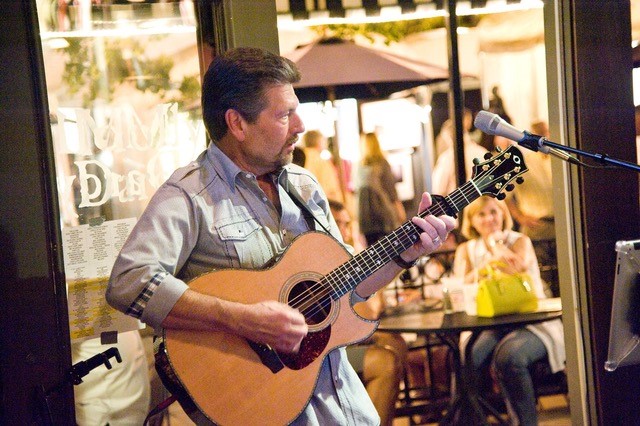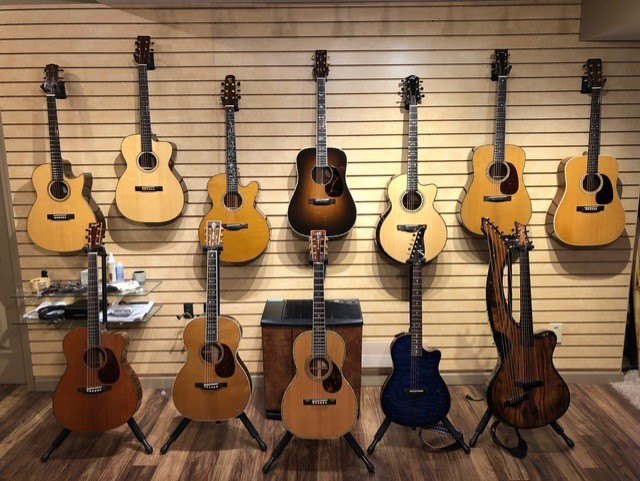Music can change your life. Proof positive: for more than five decades, Mark Ginsberg has loved collecting and playing guitars. What started for him as a “loose hobby” evolved into an avocation.
When he was ten years old growing up in suburban St. Louis, MO, he asked his parents for guitar lessons. It was 1962. Elvis was still the King, and the four lads from Liverpool had yet to land on U.S. soil. When they did, in 1964, a guitar eruption took place. Ginsberg was just one of America’s boys who wanted to play like Paul, John, George and Ringo.
Ginsberg’s first guitar was a Gibson. He was introduced to guitar watching his instructors play at camp and religious school. Soon, he was bringing along his Gibson. Folk songs were the main dish on the music menu, and he learned the lyrics to be able to sing along.
The Beatles quickly changed the music scene. Everyone wanted to be a Beatle. For Ginsberg, with the musical landscape changing, that meant moving over to an electric guitar: a Fender Jaguar. Ginsberg’s parents lent a hand, and presented him with a new one as a gift for his Bar Mitzvah.
Then it was on to forming a high school band, and learning The Beatles and Rolling Stones songs.
“I was in a band at thirteen,” he remembers. “I’d find some buddies in school who played the guitar and maybe they added a piano tune and then looked for a guy with a drum kit.”
By the time he was a high school freshman, many of his friends were now really into taking guitar lessons.
“My best friend became our lead guitarist, and he introduced me to a girl who later became my wife. When you played the guitar…girls looked at you.”
The band was hired to play at frat parties at the local colleges and many of the local high school weekly events and dances.
As a junior, influenced by Peter, Paul and Mary, Ginsberg added another element to his guitar playing. He returned to his acoustic, putting together a folk group with another guy and two girls. That paid off for them a year later.
”My senior year of high school, we spent the entire summer playing at The Tan-Tar-A Resort.” Located in the picturesque Lake of the Ozarks, a two-and-a half hour drive from St. Louis. We stayed the whole summer. They gave us free room and board, we could use the resort, hang out at the lake, and play at night”
The group disbanded after the summer and everyone headed off to college. Ginsberg stayed in touch with one of the guys who moved to Denver and over Spring Break, drove out and decided to collaborate, forming his first duo. Ginsberg sold his electric guitar and amplifier and upgraded to a Martin acoustic to play folk music.
“That was really the first good guitar I had,” he recalled. “The two of us sat down, and created a song list of 50 songs so that we could play a three-hour set.”
He sent the tape to the General Manager of The Leather Bottle, a very hip bar and restaurant in fashionable Clayton, Missouri. It was Ginsberg’s recording that paved the way for the two to work at the restaurant a couple of summers – between their junior and senior years of college.
Soon after, things changed for Ginsberg, along with the many other college guitarists, who had earned their wage and tips during school.
“You eventually graduate college, settle down, go to work and get married. Music gets put on the back burner.”
Ginsberg did just that. After college he joined his father Frank in the family business, Closeouts With Class, and eventually took over the reins. That same year, he married the cute girl – Jane – he was introduced to playing in his high school band and they raised two sons, Steven, now 41 and Scott, 40. But, he continued playing his Martin 1970 D-28 – the original acoustic he had played in college – a guitar which Ginsberg states was one of the best on the market when he bought it.
Then in 2007, at the age of 55, things began to change for Ginsberg and his guitars.
“I owned one guitar up until 2007. I had just turned 55. I spent most of my adult life running a company. I hadn’t been dependent on my income from music gigs. I now had enough disposable income to appreciate, afford and purchase different makers of high end guitars. It resulted in me ending up with quite a collection.”



No comments